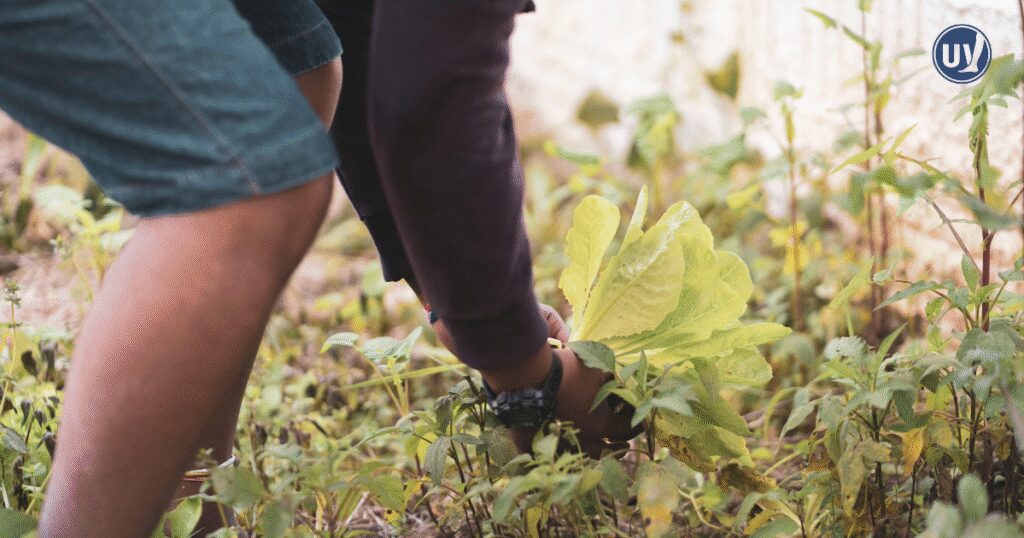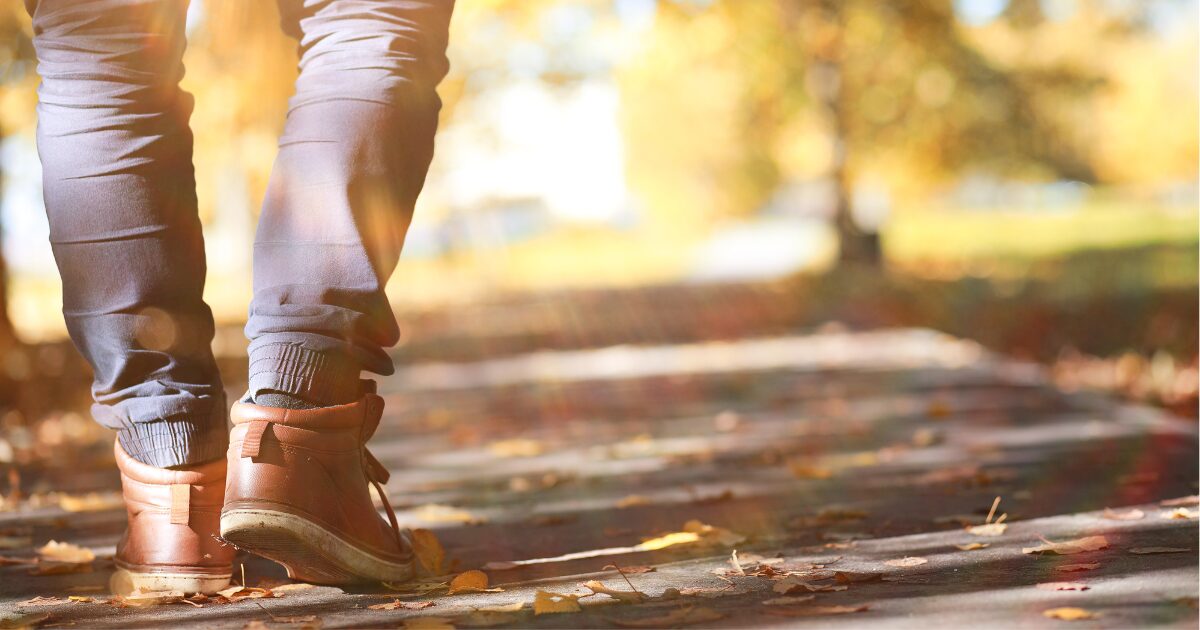The knee is one of the most complex joints in the body, supporting your full weight while enabling a wide range of motion. Composed of bones, cartilage, ligaments, and tendons, the knee is designed to handle movement, yet repetitive bending, twisting, or sudden impact can place significant stress on the joint. Over time, these stresses can contribute to wear and tear, especially if precautions aren’t taken.
Fall is a season of activity, from hiking scenic trails to raking leaves and enjoying seasonal sports. While these activities are enjoyable, they can also increase the risk of knee strain or injury if proper care isn’t taken.
Understanding which activities are most likely to stress your knees and how to protect them is essential for maintaining long-term joint health. By taking a proactive approach, you can continue to enjoy the season while minimizing discomfort and reducing the likelihood of injury.
How Fall Activities Affect the Knees
Hiking
Hiking is a favorite fall pastime, offering breathtaking views and a satisfying workout. The appeal of hiking lies in the combination of exercise and exploration of scenic landscapes. However, uneven terrain, steep inclines, and sudden changes in elevation can place significant pressure on the knees. Navigating rocky trails or descending steep paths forces the knee to stabilize the body while absorbing impact, which can aggravate existing knee issues or even cause new injuries. The constant bending, twisting, and pressure on the joint make it important to approach hiking with strategies that protect your knees.
Wearing supportive hiking boots with proper cushioning and ankle support can help stabilize your legs and absorb shock. Using trekking poles is another effective method, as they distribute weight more evenly across your body and reduce the burden on your knees. Additionally, pacing yourself during long or steep hikes and taking breaks when necessary can prevent excessive strain and allow your muscles and joints to recover.
Gardening and Yard Work
Raking leaves, planting, and other fall gardening tasks may seem harmless, but they can be surprisingly stressful on the knees. Activities that require repetitive bending, kneeling, or squatting place strain on the joint and surrounding muscles. Over time, this repetitive motion can lead to overuse injuries, particularly for individuals with pre-existing conditions like osteoarthritis. Even simple tasks like weeding or digging can cause knee pain if done frequently without care.
Small adjustments can make a significant difference. Using ergonomic tools that minimize bending, alternating between kneeling and standing, or employing a small garden stool or knee pads can help reduce joint stress. Taking regular breaks during prolonged yard work also gives your knees a chance to rest and prevents inflammation from developing.

Fall Sports and Recreational Activities
Soccer, football, and casual seasonal games are popular ways to stay active, but they also challenge the knee joint. High-impact movements such as sudden stops, jumps, pivots, and quick direction changes can strain the ligaments and cartilage in the knees, increasing the risk of injury. While these sports are exciting and promote fitness, participants must remain vigilant about knee safety to prevent long-term damage.
Proper warm-ups and stretches before play are essential for preparing the muscles and joints for activity. Strengthening exercises targeting the quadriceps, hamstrings, and calves can improve stability and support the knee. Wearing appropriate sports gear, including knee braces or supportive shoes, can further reduce the risk of injury.
Protecting Your Knees During Fall Activities
Preventing knee injuries doesn’t mean giving up activities you enjoy. With the right approach, you can significantly reduce strain and maintain healthy joints throughout the season. Preparing your body before activity, using supportive gear, and modifying movements are all effective strategies.
A proper warm-up increases blood flow to your muscles, enhances joint flexibility, and reduces the risk of injury. Incorporating dynamic stretches and light cardio prepares your body for movement while focusing on muscles surrounding the knee. Even a few minutes of leg swings, calf raises, or hamstring stretches can make a meaningful difference in flexibility and stability.
Supportive gear, including knee braces, compression sleeves, and well-cushioned footwear, provides stability and helps distribute weight evenly across the joint. These aids can absorb shock during high-impact activities and prevent misalignment that contributes to knee pain. Choosing footwear with good arch support also promotes proper posture and reduces stress on the knees during hiking, running, or sports.
If you already experience chronic knee pain, consider lower-impact activities to maintain fitness without aggravating your condition. Walking on level surfaces, swimming, or cycling offers cardiovascular benefits while minimizing joint stress. Regular participation in these exercises helps maintain mobility and strength, which are crucial for supporting knee health in all activities.
Modifying your technique during higher-impact tasks is another effective strategy. For instance, when hiking, trekking poles can take pressure off your knees, while for gardening, knee pads or a small stool reduce the time spent kneeling and bending. Mindful movement and posture adjustments can prevent overloading the joint and reduce the risk of injury.
Managing Knee Discomfort
Even with careful preparation, knee discomfort may occur. Addressing it promptly can prevent the problem from worsening. Allowing your knees time to rest after activity is essential, and applying ice packs to sore areas can reduce inflammation and numb pain. Non-prescription pain relievers like ibuprofen or acetaminophen can help manage temporary discomfort, but they should be used as directed and in consultation with a vascular specialist if needed.
Engaging in gentle strengthening exercises can also aid recovery and maintain joint stability. Movements like leg raises or quadriceps sets help support the knee without adding strain, promoting long-term joint health. However, if pain persists, worsens, or limits daily activities, it’s important to seek professional evaluation. Early intervention can prevent complications and lead to faster recovery, ensuring that your knees remain strong and functional.
Professional Support and Treatment Options
For individuals with chronic knee pain or underlying conditions like osteoarthritis, understanding treatment options is key to proactive care. Approaches range from physical therapy and medications to minimally invasive procedures and surgical interventions. Each treatment comes with unique benefits, and a specialist can guide you toward the most appropriate option for your lifestyle and health goals.
At United Vein & Vascular Centers, our team provides comprehensive evaluations and personalized care plans to address joint and vascular-related concerns. If you experience persistent knee discomfort or want guidance on protecting your knees during fall activities, schedule a consultation today to explore the best strategies and treatments for your needs. Taking early action can improve mobility, reduce pain, and help you enjoy the season without limitations.
Frequently Asked Questions
Activities that involve bending, twisting, or high impact—like hiking on uneven trails, raking leaves, or participating in fall sports—can strain the knees and surrounding muscles.
Proper warm-ups, stretching, supportive gear, and modifications to your technique, such as using trekking poles or knee pads, can help protect your joints and reduce strain.
Persistent, worsening, or activity-limiting knee pain warrants a professional evaluation. A specialist can assess your condition and recommend treatments to prevent further injury.


